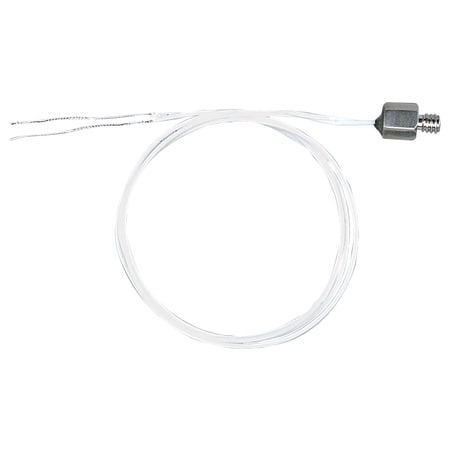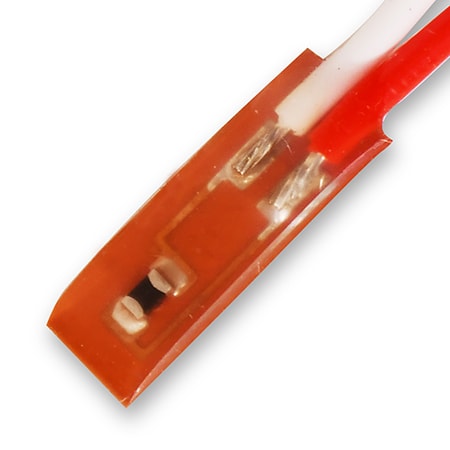Commonly asked questions about Thermistors.
How Do They Compare to RTDs?
In contrast to RTDs that change resistance in a nearly linear way, NTC thermistors have a highly nonlinear change in resistance and actually reduce their resistance with increases in temperature. The reasons that thermistors continue to be popular for measuring temperature is:
- Their higher resistance change per degree of temperature provides greater resolution
- High level of repeatability and stability
- Excellent Interchangeability
- A small size means fast response to temperature changes
How Does a Thermistor Work in a Controlled Environment?
Thermistors are commonly used to measure the internal temperature of electronic devices. A thermistor provides feedback to a temperature controller that monitors the thermistor’s temperature and turns heating and cooling elements on or off to keep it at a desired temperature.
The temperature controller sends a small amount of current, called a bias current, across the thermistor. It uses this current to measure the voltage drop across the thermistor, which indicates how much resistance the thermistor is supplying. The sensor’s temperature can be calculated from this measurement.
What Thermistor is Best for My Application?
Whether you are replacing an existing thermistor, or selecting one for a new application, there are 3 key pieces of information needed to obtain the desired result. These are:
- Select the right base resistance for your new application, or correctly specify the base resistance of the thermistor needing to be replaced
- Specify a resistance vs. temperature relationship (“curve”), or for replacement applications, make sure you know the existing thermistor information
- Thermistor size or sensor package style
The Most Common Thermistor Resistances
- 2252Ω
- 3000Ω
- 5000Ω
- 10,000Ω
- 30,000Ω
- 50,000Ω
- 1 MΩ (1,000,000)
Thermistor Accuracy
Thermistors are one of the most accurate types of temperature sensors. OMEGA thermistors have an accuracy of ±0.1°C or ±0.2°C depending on the particular temperature sensor model. However, these elements are fairly limited in their temperature range, working only over a nominal range of 0°C to 100°C.
Thermistor Stability
Finished thermistor elements are chemically stable and not significantly affected by aging.
Size or Sensor Package Style
Once the right resistance and “curve” are established, the user should consider how the thermistor will be used. When selecting the right size or packaging for the thermistor sensor, it helps to remember that like any other sensor, a thermistor only measures its own temperature.
Thermistor beads are generally not designed for direct immersion into a process. They are small devices that change temperature very quickly since the only thing between them and the environment is a thin coating of epoxy. At OMEGA, we offer a comprehensive line of sensors that protect the thermistor while allowing it to be used in a wide variety of applications. Below are a sampling of some of these styles.

General Purpose
General purpose sensor designs are those that can be adapted to a wide variety of uses. Ranging from electronic equipment to structures, processes and design and reliability testing applications, these sensors are easy to install and monitor. The OMEGA ON-950 is an example of this type of construction. A small SST housing with #8-32 threaded stud can be installed into any #8-32 threaded hole, taking up a very small amount of space.
Liquid Immersion Measurement
When exposed to liquids, thermistors need to be protected from corrosion as well as positioned into the fluid so it will come to the needed temperature. This is typically achieved using closed ended tubes and specially designed housings. Care must be taken to make sure that there is a good thermal path to the thermistor, and that thermal mass is as small as possible.
Surface Sensing
A simple but effective sensor design for monitoring surface temperature is the ON-409 attachable surface sensor. This design includes a thin, round metal stamping into which the thermistor is epoxied. The metal stamping can then be attached to a surface using an epoxy or other method to measure surface temperature.


